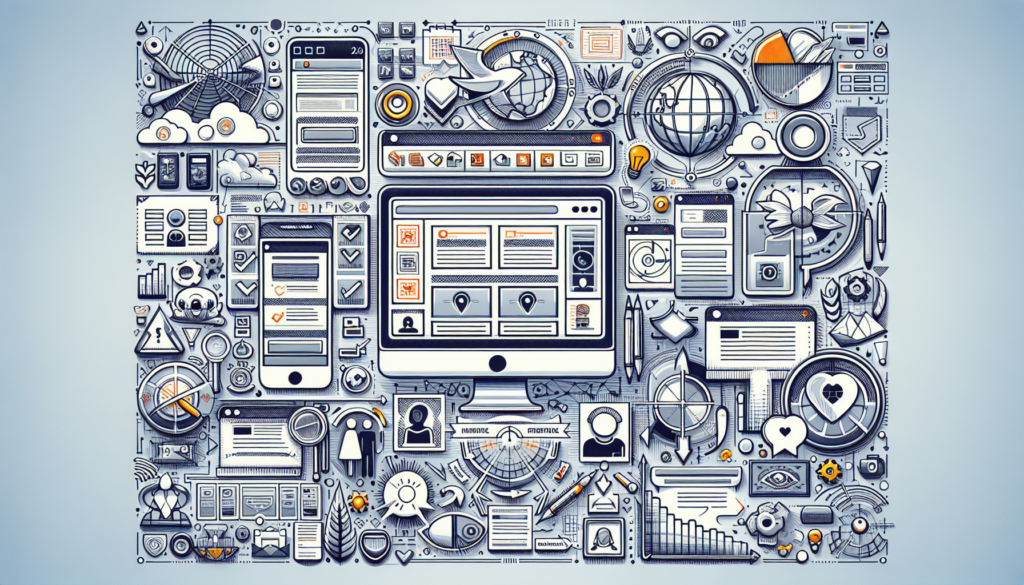In the discipline of web design, grounding each aspect in the understanding and anticipation of user needs is essential for forging superior digital experiences. This systemic approach, known as user-centered web design (UCD), bases its methodology on an iterative loop of research, prototyping, and validation. This article unravels the particularities of UCD with a contemporary perspective, revealing how the convergence between cognitive psychology, information architecture, and emerging technologies weave a scenario in which design transcends its aesthetic facet to become a functional and accessible monolith.
The Philosophy of UCD and Applied Cognitive Psychology
UCD is founded on a deep understanding of the users: their contexts, behaviors, limitations, and motivations. For this, qualitative and quantitative research techniques are used, including surveys, interviews, usability tests, and heuristic analyses. Such an approach is complemented by principles of cognitive psychology, which are essential to understand how users process information, make decisions, and perform tasks.
Alignment of Information Architecture
Information architecture is the skeleton of web design: it defines structure, organizes content, and directs navigation flows. To optimize it, a meticulous cataloging of content based on user search and usage patterns must be carried out, deploying intuitive taxonomies and labeling systems that improve access and understanding.
Interfaces and Interactive Elements
Interactive elements, such as forms and calls to action, should be designed prioritizing simplicity and clarity. The goal is to minimize the cognitive load of the user, avoiding information overload and using visual cues that guide navigation intuitively.
Prototyping Tools and Methodologies
Prototyping is a critical stage in UCD. Tools such as Sketch, Adobe XD, and Figma allow the creation of high and low fidelity prototypes to test functionalities before implementation. The use of Wireframes and Mockups facilitates the visualization of ideas and promotes constructive dialogue between designers, developers, and stakeholders.
Validation with Real Users: Usability Testing
Usability testing is based on the interaction of real users with the prototypes or final products, collecting observations that reveal usability issues. The efficacy, efficiency, and satisfaction in performing specific tasks are monitored, often accompanied by metrics such as task time or error rate.
Accessibility: A Non-negotiable Requirement
Web accessibility means that people with different types of disabilities can use websites. It adheres to standards such as the WCAG (Web Content Accessibility Guidelines) which prescribe criteria for creating more accessible content. Digital inclusion is not only an ethical imperative but also a legal requirement in many contexts.
SEO and UCD: Compatibility and Balance
Search engine optimization (SEO) and UCD can coexist harmoniously. A user-focused design usually implies a clear structure, relevant content, and semantically rich header tags; fundamental pillars of SEO. Additionally, load speed and mobile adaptability are factors valued by both search engines and users.
Technological Innovations and their Influence on UCD
Technologies such as AI, machine learning, and big data are redefining the boundaries of what’s possible in UCD. Personalization of content and adaptability of interfaces based on user data are possible thanks to these advances. However, they must be balanced with ethical considerations in the treatment of personal data.
Case Studies: Practical Application of UCD
Examining successful cases where UCD has been outstandingly applied, such as in e-commerce platforms or learning management systems, we identify replicable patterns and strategies. A breakdown of metrics and user feedback in these scenarios strengthens our understanding of effective UCD practices.
Future Visions on the Horizon of Web Design
Projecting into the future, user-centered web design will continue to evolve with the advancement of new technologies and methodologies. Experiments in augmented reality (AR), virtual reality (VR), and brain-computer interface will expand the frontiers of interactive design. Anticipating and adapting to these emerging trends will be crucial to maintaining the relevance and effectiveness of UCD.
In conclusion, consolidating user-centered web design demands a symbiotic fusion of art and science; a precise balance between aesthetics, functionality, and human psychology. Embracing both tradition and technological innovation, and always anchored in reliable data and real testing, UCD has the potential to shape digital interactions in ways that, until now, we could only imagine. The ultimate goal is to grant the user not just an unforgettable experience but also an empowering and enriching one at every digital touchpoint.

